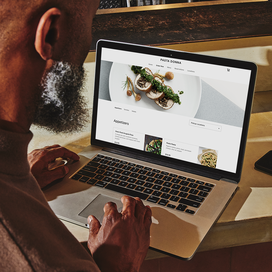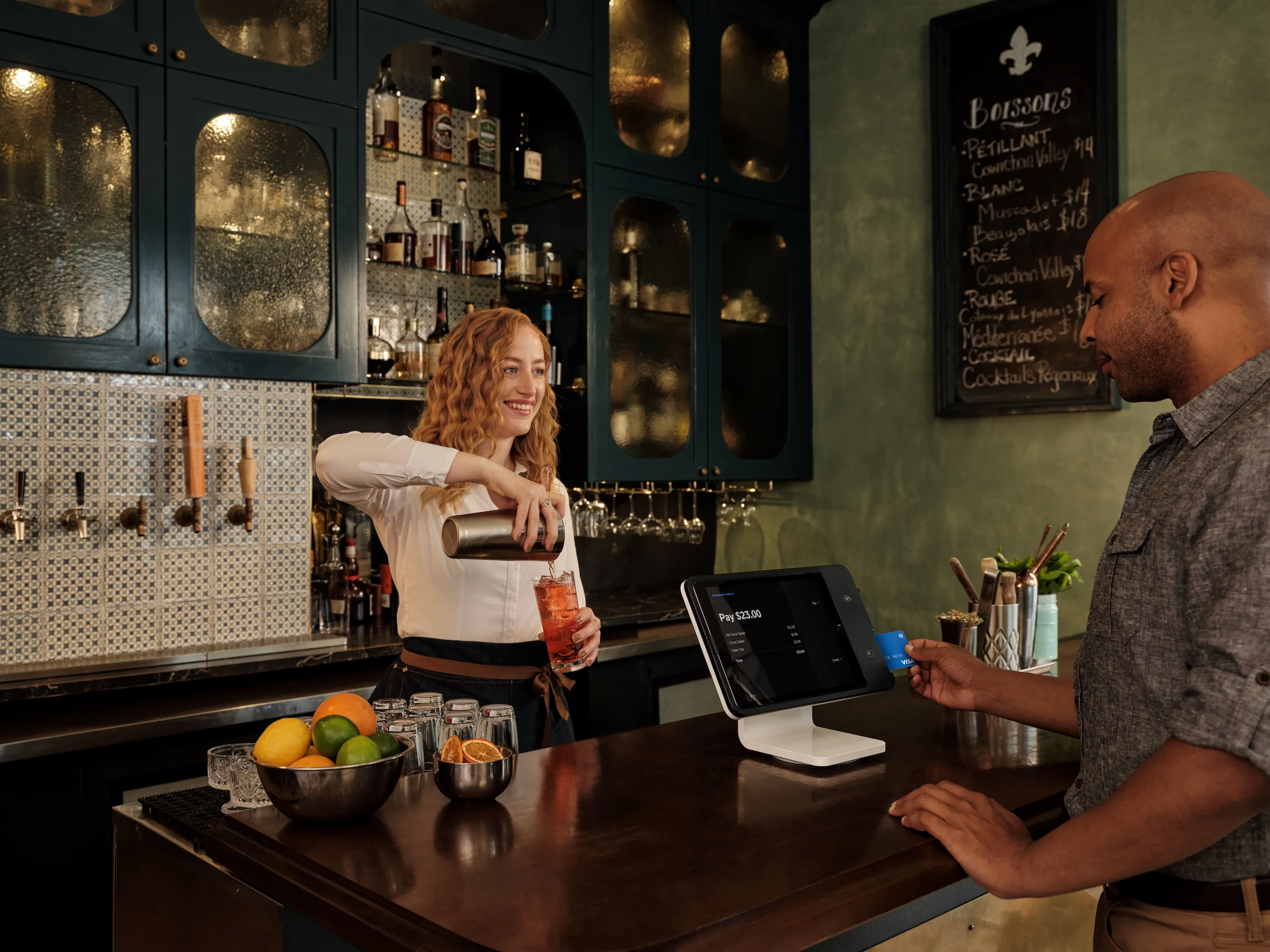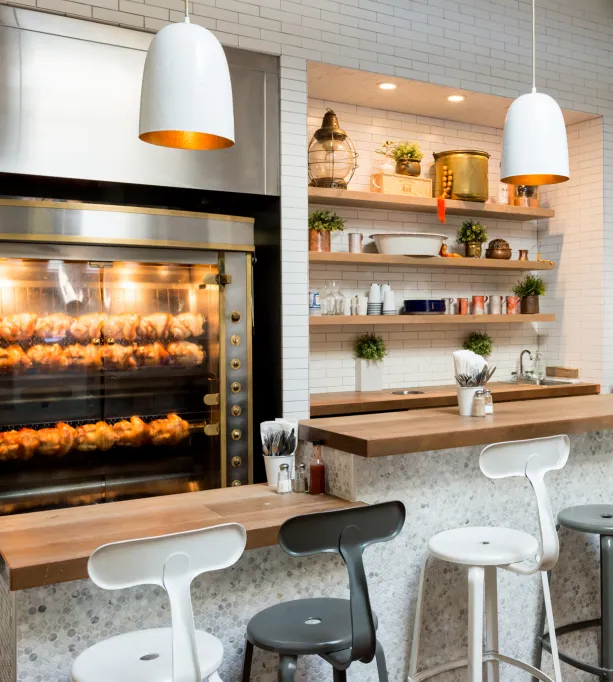Table of contents
How to Start a Restaurant: A 10-Step Checklist
Opening a restaurant is a huge undertaking. It takes money, time, resources, and dedication to get your new business started long before you even serve your first customer. But if you’re wondering how to start a restaurant and feeling overwhelmed, don’t worry: by breaking the process down, you can make your dream a reality.
Here are 10 steps to make opening a restaurant go smoothly, keep your business expenses manageable, and make your new restaurant business a long-term success.
1. Define your restaurant concept.
One of the most important considerations when exploring how to start a restaurant is your concept. Your restaurant concept should be woven into every aspect of your business, from the food itself to your style of customer service. Your concept should also be reflected in the name of your restaurant, the design of your collateral, and your decor.
2. Create a business plan for your restaurant.
Your restaurant business plan should lay out the foundation of your operations. Be sure to include an executive summary, company description, industry analysis, geographic analysis, target market analysis, food safety plan, sample menu, marketing plan, management strategy, and financial plan. With a solid business structure, you can create long-term success.
3. Research restaurant funding options.
Assess how much it will cost to open your restaurant, as well as operational costs, to determine how to fund your restaurant. There are a number of options to consider, from takin on an investor to applying for a loan. You can apply for a loan through the Small Business Administration, technology providers like Square, or credit unions. Be sure to calculate your break-even point and create a financial analysis as well as get a better understanding of your predictive cash flow.
4. Obtain the licenses and permits needed to open a restaurant.
Aside from the standard business licenses and permits needed to open up shop, there are other licenses you need that may vary from state to state. Be sure to do your research on food safety regulations and create a list of standards you have to adhere to, such as food service and liquor licenses.
5. Register your business.
You need to register your business with the IRS to receive your Employer Identification Number, which you need to file taxes. (You can sign up for one here.) You might think about trademarking your restaurant’s name, too (to stop people from copying you and capitalizing on your restaurant’s success).
6. Select the right restaurant location.
A restaurant’s location can make or break it. Visibility and foot traffic are two important factors to consider during the selection process for a commercial space. You also want to evaluate the size and interior layout to decide if it’s the best fit for your restaurant floor plan.
7. Order restaurant equipment.
Restaurant equipment can get pricey, so you want to be strategic when selecting what to buy or lease. List out everything that you absolutely need — which depends on your menu — versus what you want, from kitchen equipment to decor for the dining room. You can save money by buying some gently used items. Make decisions based on your budget and your financial analysis.
8. Hire the right staff.
Make a list of how much staff you need to run your front and back of house efficiently. Then get to hiring. While you’re doing that, you should also decide if you want to process payroll yourself or use payroll software. Just keep in mind that restaurant payroll can get quite complex, especially with varying state/, ederal, and local laws and regulations around wages and tips.
9. Create a menu.
Your menu is the centerpiece of your restaurant and should reflect your concept and brand. But it’s also a marketing tool that can help convince new customers to try your restaurant. Your descriptions should be concise but appeal to your audience.
10. Create a marketing plan.
Figuring out how to start a restaurant can be difficult, but maintaining a long-term customer base requires a new set of skills. Before you open a restaurant, it’s important to develop a marketing plan that drives awareness, brings in new customers, and creates a loyal following. Marketing tactics you might use include everything from social media to hosting a soft opening that drives hype.
Restaurant industry segments
If you’re wondering how to start a restaurant, you might want to begin by determining what type of eating establishment you want to manage. Recognizing where a restaurant fits in the industry can help you understand the competitive landscape and better strategize your entry into the market and your food costs when opening a restaurant. Establishments can be loosely broken down into various segments, from your basic fast food joint to full-service restaurants to a prestigious three-star Michelin dining experience:
- Food truck businesses provide an excellent opportunity for aspiring restaurateurs to break into the industry. Food trucks tend to be more affordable than a brick-and-mortar location, but the cost of operating your business can vary widely based on your city.
- Pop-up restaurants are another great way to test out a menu and gauge customer interest in a temporary setting. In fact, the National Restaurant Association named pop-up restaurants as the sixth most popular restaurant concept trend.
- Fast food restaurants, also called quick service restaurants (QSRs), specialize in quick preparation and casual service. Seating is limited since most customers order at the register and take their food to go.
- Fast-casual establishments mirror fast food service since they do not often provide sit-down service, but they typically offer freshly prepared food of wholesome quality. As a result, their food prices tend to be higher than QSRs. Another differentiator from QSRs is that fast-casual places often provide non-disposable utensils and plates.
- Casual dining offers a full-service restaurant experience for customers at an affordable price. With a relaxed ambiance, consumers can come in, sit down, and enjoy a meal without breaking the bank.
- Family dining follows a similar format to casual dining, but most establishments don’t serve alcohol. Family dining usually offers breakfast, lunch, and dinner options, making them open for more hours.
- Fine-dining restaurants provide customers with an elegant and upscale dining experience. While these restaurants have higher price points, customers are paying for top-quality food and the best service the industry can provide.
An overview of restaurant safety and food handling
Before diving into how to start a restaurant, it’s important to understand the restaurant industry as a whole. Restaurant safety and food handling protocols are top priorities for the industry, so you should understand the ins and outs before you open a restaurant.
To keep guests safe and prevent food-borne illnesses, the restaurant industry is heavily regulated at city, state, and federal levels. Several federal agencies play a crucial role in the industry, some of which include:
- The Food and Drug Administration (FDA)
- The Centers for Disease Control and Prevention (CDC)
- Food Safety and Inspection Services (FSIS)
Local health department regulations vary depending on where you decide to open a restaurant. If you are considering multiple locations, each restaurant could have a different set of compliance obligations. Be sure to check out your restaurant state guidelines in addition to keeping up with federal agency recommendations and new educational resources published by these agencies.
There are several inspections a restaurant may be subject to in order to verify restaurant safety and operational compliance. An initial restaurant inspection may cover a variety of food safety protocols and grade a restaurant’s abilities in food handling, food storage, employee hygiene, and operational excellence. Subsequent inspections throughout the year are normal, so you’ll want to come up with best practices for food safety and restaurant sanitation.
By familiarizing themselves with regulations, obtaining specific industry-related licenses, and adhering to the basic food safety procedures, restaurant owners can keep their reputation intact and customers out of harm’s way.
The cost of starting a restaurant
Most people who consider opening a restaurant want to know how much it costs to open a restaurant. It seems like a simple question, but the truth is, there’s no one-size-fits-all answer for how much it costs to start a restaurant. Restaurant startup costs are dependent on various factors, including:
- Size of the restaurant
- Type of restaurant (see above)
- Number of staff
- Restaurant real estate
Opening a restaurant is usually a spendy proposition. On average, the cost of starting a restaurant can vary from $95,000 to over $2 million, and incorrect forecasts and budgeting are a major reason why restaurants fail. Avoid these situations by learning what operating costs you can expect and how to keep costs low so you can create a sustainable business model.
After long hours of computing numbers and hashing out prices, you may realize that you don’t have the capital to front these costs initially. Don’t worry, there are plenty of financing options for restaurant owners to help get you started.
And remember, even if you don’t need a loan to start your restaurant business, you may need a loan for future costs you can expect to pay, like purchasing inventory or new equipment, renovations, or hiring.
Taking payments from customers
Understanding the restaurant industry and mapping out your restaurant costs are the initial ingredients for success, and now it’s time to focus on taking payments from customers.
Making your first sale is an exciting milestone when you first start a restaurant, and it should be a seamless experience that first time and every time after. To do that, you need to choose a payment processor and point-of-sale (POS) software.
A payment processor handles credit and debit card transactions for your business. You want to look for a payment processor that accepts all major credit cards, has one consistent rate (with no hidden fees), and has quick deposit times.
An intuitive point-of-sale system lets you get started taking payments quickly, and it can also grow with your restaurant (and help it grow). An integrated restaurant point of sale not only lets you accept all types of payments, including magstripe, EMV chip, and NFC (mobile payments), but can also help you run your entire restaurant more efficiently.
A restaurant POS system can help you with:
- Inventory tracking to better forecast ingredients and supplies
- Built-in tipping that substantially increases tip flow
- Automatic tip reconciliation
- Menu adjustments to include modifiers and other requests
- Employee timecards that easily track hours worked
- Data analytics that give you better insight to make decisions
- Immediate customer insights and feedback
- Multiple-menu management
- Customizable floor plans
- Coursing and effective communication between servers and chefs
Outdated, slow POS systems can really hurt your sales, so it’s important to invest in capabilities that are quick for your customers, easy to use for your employees, and efficient for your restaurant overall. An integrated POS puts all your information — from sales and inventory to employee timecards — in one view, significantly improving organization and the ability to make better decisions.
Visit our Square for Restaurants POS Demo page to see how we make running a restaurant easier.
Also, consider a plan for online orders: Square Future of Commerce data found that 37% of restaurants plan to stay competitive by providing quicker ordering options such as kiosks or app-based ordering.
Building a brand for a restaurant
How can you compete with more established restaurants to capture consumers’ attention and build loyalty? You need to build a brand.
Branding your business is an integral part of opening a restaurant, and it can play a major role in your future expansion and growth. Your brand is what distinguishes you from your competition. And it’s what makes your restaurant stand out and can often be the deciding factor for diners in an environment with endless options.
Here’s a crash course to get started branding your restaurant:
Start with positioning.
Evaluate your restaurant’s product, placement, promotion, and price to determine where your restaurant sits among the competition and to identify your unique selling proposition for your target customers.
Define your concept and location.
Your concept and location should play into how you position your restaurant. From the type of food to the interior design and even the staff selection, your concept dictates many of these decisions moving forward. Neighborhood stereotypes, location accessibility, and local competitors are location factors that affect your positioning.
Craft a mission statement.
Your mission statement defines what you do, who you are, and why you’re doing it. It should be your restaurant’s North Star, and decisions should align with it to create a consistent experience.
Be consistent in the details.
You communicate your brand through every part of your business. So, to create a clear and memorable brand, you need to look at every detail for consistency. That means looking at the visual elements of your restaurant — your name and logo, menus, decor, uniforms, etc. — and the written elements (or your brand voice) — your website and other marketing channels like social channels — to make sure they support your mission.
Once you’ve established your brand, you need to create awareness of it among prospective customers. Here are a few ways to get started:
Hold a soft opening.
The exclusivity of a soft opening intrigues a crowd and gets people talking about your restaurant, and building hype is important. Additionally, the soft opening gives your staff a practice run and helps you further hash out menu items and get feedback before anything is solidified. Brainstorm soft-opening launch ideas that blow your competition out of the water and give you a leg up when it’s time to open your doors.
Market your restaurant.
There are many channels you can use to boost your restaurant marketing strategy. Traditional channels like TV tend to be pricey but reach a lot of people. Digital channels like social media, content marketing, and email are often low-cost and do a better job of engaging (and building relationships with) prospective customers. You should test these channels to see what works for you (it may be a mix of both), but regardless of the media, you should use your brand visuals and voice in all your marketing.
Nail your grand opening.
After you’ve captured your customers’ interest with a soft opening and begun your marketing campaign, you’re ready to make a splash with your restaurant’s grand opening. You don’t need to have a large, showy, or expensive promotion to attract customers on your opening day; with a good content marketing and social media strategy, you’ll be generating excitement and drawing in new diners. You can consider offering a promotion or coupon for your grand opening or partnering with a charity to foster roots in your community. Overall, a successful opening night can create buzz, give your restaurant a jump start, and set a positive trajectory for the months to come.
Build a loyal following.
A customer loyalty program, in which you reward customers for repeat visits, can be a powerful tool. It can turn a first-time customer into a regular customer and a brand advocate. Advocates have huge value for your business because they tell their friends about your restaurant. And word of mouth is powerful. One study by Nielsen found that customers value referrals from friends and family more than any other type of marketing.
Restaurant trends to watch
Restaurant owners are responsible for staying ahead of trends in the restaurant industry, but that doesn’t just entail the latest food fads. Technology helps restaurants provide the ultimate customer experience and is becoming a more prominent part of the industry. Here are a few emerging restaurant trends to take into consideration.
Immediate customer feedback
Incorporating feedback into the dining experience allows customers to rate their experience through their digital receipt, which gives your restaurant the real-time data needed for continuous improvement. Feedback is one of several customer engagement features that allow restaurant owners to get a better understanding of what their customers want.
Accepting mobile wallets
Mobile wallets like Apple Pay have become increasingly popular and are shaping the future of payments. Some of the key benefits of accepting mobile wallets include increased security, speed, and convenience.
Delivery services
To reach a wider customer base, many restaurants have begun exploring food delivery services. This taps into an entirely new market potential and can help your restaurant stay competitive with others using the services.
Self-serve ordering
As the restaurant industry continues to explore automation, there’s a spike in interest in tableside contact-free ordering. Diners can scan QR codes to order food and drinks, as well as pay for their meal, without interacting with a server.
Tips from 3 restaurateurs on how to start a restaurant
We’ve tackled how to open a restaurant. Now there’s the million-dollar question every aspiring restaurant owner asks: Will my restaurant be successful?
Opening a restaurant is an intricate process that requires dedication and commitment, and questioning your decision to embark on this rigorous journey is completely normal. Here are three tips from experienced owners that you can use when starting out.
- Stay resilient.
Tod Wilson, the owner of the prosperous Mr. Tod’s Pie Factory in New Jersey, will be the first to tell you that this process isn’t always easy. Tod was the first winner on Shark Tank in 2009, but he faced much adversity along the way when he was trying to get his business up and running. What advice does Tod offer about success? He stresses the need for resiliency. “Keep fighting. Every time I find myself in a tough position, I think about that. You have to just get up after you get knocked down,” said Tod. “Whether it’s a product recall, not getting an order in, or losing a new hire, you have to be able to bounce back.” - Make a great first impression.
Jeff Heck, the owner of Atlanta’s Monday Night Brewing emphasizes the first-time experience for a customer. You essentially have one time to get it right and make an impression on a first-time customer. If guests have one bad experience, “odds are they’ll never try it again.” - Stay true to your brand.
Young Han is the head of community outreach at Philz Coffee and believes you should “never forget why you started. Always circle back to that and stay true to your core.”
![]()















